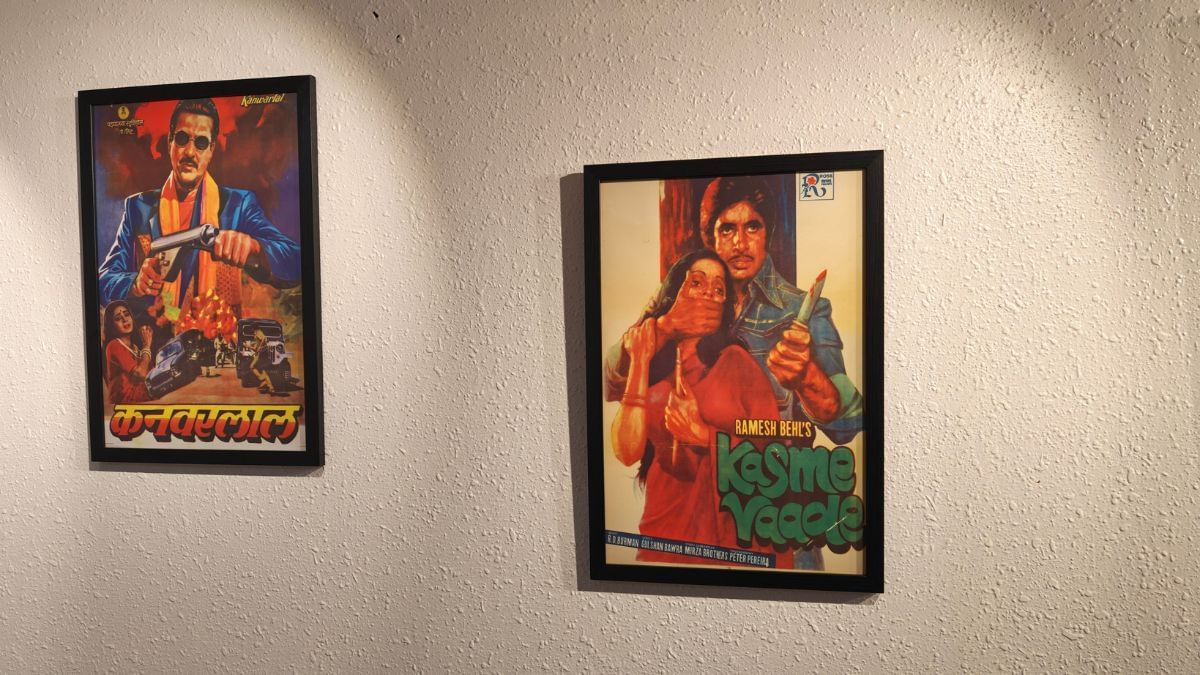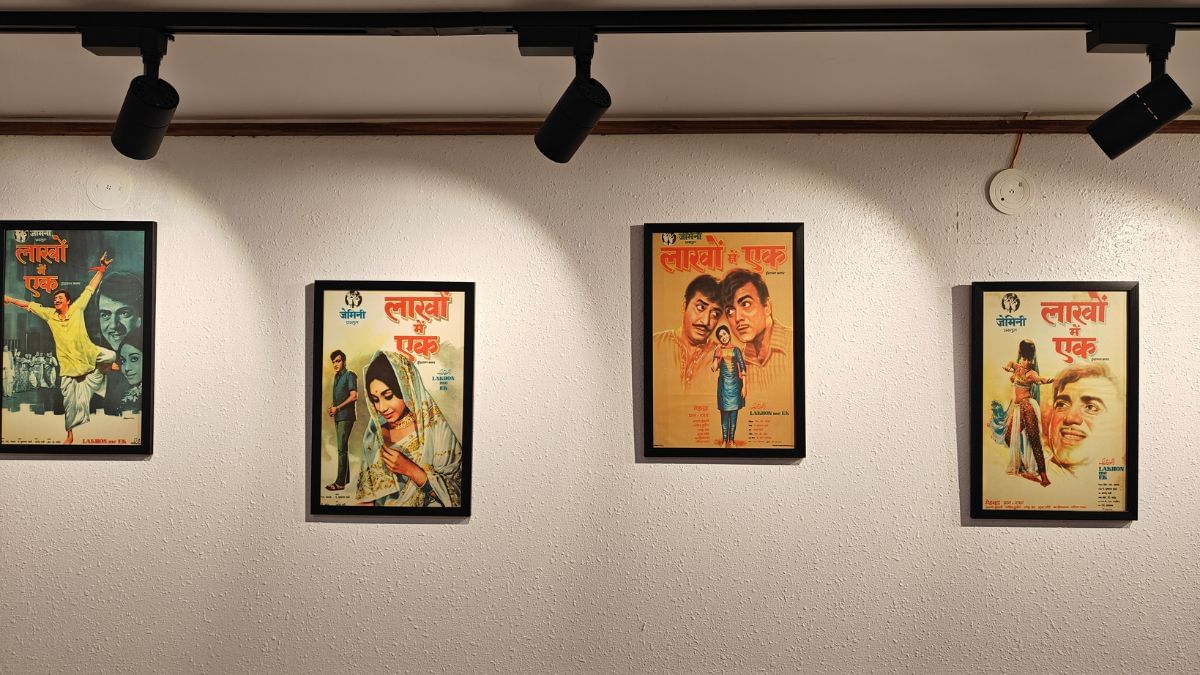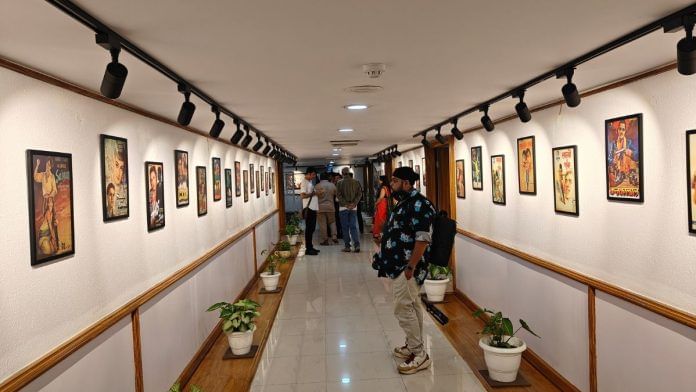New Delhi: Holding a bloody knife in one hand and covering the mouth of a struggling Rakhee with the other, Amitabh Bachchan holds an intense gaze in the poster of Kasme Vaade (1978). It is one of the 42 posters adorning the second-floor gallery at the National Cooperative Union of India auditorium in Delhi.
Titled ‘Poster Bolte Hai’, the exhibition is a glimpse into the now-obsolete art of film poster making that used to be the cornerstone of marketing a movie in India. The exhibition was part of the recently concluded Celebrating India Film Festival (CIFF 2025) in Delhi. The film festival was held between 8-10 August.
“These poster markers were once the stars of the cinema industry. Many artists came all the way from small towns to Bombay and painted these posters that would be stuck outside cinema halls, roads, walls, and everywhere else,” said curator Iqbal Rizvi. A project associate at Indira Gandhi National Centre for Arts (IGNCA), he also wrote a book with the same title as the exhibition, in 2018, documenting the history of posters.
The exhibition is a fraction of the collection Rizvi curated over the course of writing his book, sifting through Daryaganj book market to Mumbai’s infamous Chor Bazar.

Smiling Mehmood
Kasme Vaade is not the only poster that stands out, with the striking use of a violent scene from the film. There is a poster of Kanwarlal (1988), which is dominated by a colourful image of Jeetendra holding a gun. It also has an overturned car set on fire, and Jaya Prada with a despairing expression on her face. Another of C.I.D. (1990) that starred Vinod Khanna, also has him holding a gun while Amrita Pritam holds a child, distress evident on her face. These two are also the latest of the posters painted for films.
“Posters would undergo changes depending on the film’s performance. If a scene became popular, the new set of posters would have that. If a song became a hit, the lyrics would be put on the poster,” said Rizvi.

This is also documented through the four different posters of Lakhon Me Ek (1971), which starred Mehmood, Pran, and Radha Saluja. Each poster prominently displays the production company, Gemini Pictures, while displaying the actors in different moods. In one poster, Radha Saluja is shyly looking down, her head covered with a lime green pallu, while Mehmood looks on from afar. In another, there is an image of Padma Khanna, who performed in the song ‘Mein Tera Naam Janu Na’.
A blurred portrait of a smiling Mehmood, seemingly at Khanna, completes the image.
As the film completed 10 years, its certificate issued by the Central Board of Film Certification (CBFC) had to be renewed. Along with the renewal, production companies would issue a fresh set of posters, which often looked different from the original set commissioned during the film’s release.
The certification rule was changed in 2024.
Also read: Afghan, Iranian artists salute Delhi’s inclusive spirit. ‘Never felt like I lived abroad’
Posters of credit
While posters were the trailers of the 20th century, they also marked the fight for credit concerning music directors, lyricists, and writers. “The poster is the first glimpse of the film, and everyone wanted to be on it. Javed Akhtar fought for writing credits on posters, and Sahir Ludhianvi wanted to be mentioned in the poster as the man who wrote the film’s songs,” said Rizvi.
It started with a production company finding the centre piece on posters, which later shifted to the corner as stars became the main force behind a film’s success. Later, it moved to music and scriptwriting.
The massive posters that hung on theatre halls would be painted by banner artists, keeping the original design in mind, and creating livelihood opportunities in smaller towns. With the end of posters being marketing tools, they too faded away, both from the profession and public memories.
Through the exhibition, Rizvi wanted to give these anonymous painters a tribute, especially in the context of the festival that celebrates cinema.
“Film posters were never considered art, and their makers were simply called painters. But these posters were not merely coloured paper, but a medium of exchanging information with its viewers, and now, the source of cinema history,” reads Rizvi’s curatorial note.
(Edited by Ratan Priya)






